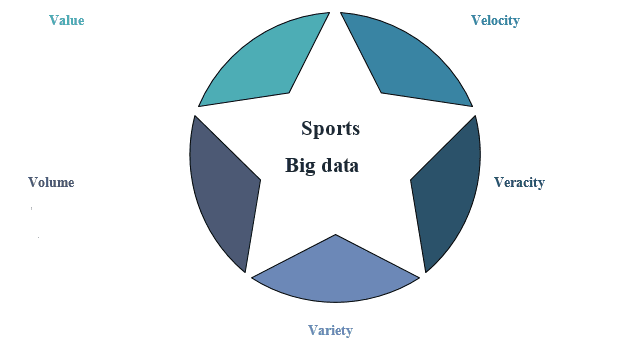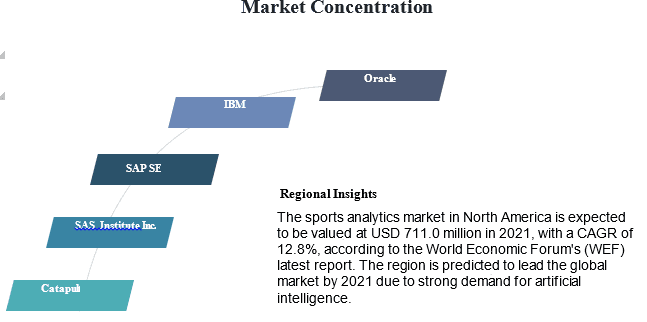Unleashing the Power of Big Data: Revolutionizing Sports Analytics
Sports are becoming more competitive and interesting for spectators’ thanks in large part to big data. Since the 1990s, it has been used by everyone—from minor leaguers to professional athletes—to improve athletic performance, audience engagement, and marketing and branding tactics. Competition victory depends on big data services that are intimately tied to it, such as exercise performance, health information, training statistics, and analysis. The development of the sports industry has been significantly impacted by the big data era.
Can Big Data skew reality?
Uncommonly understood, just as you are what you consume, your thoughts and actions are influenced by the material you are exposed to. This is the reality of virtualization using binary numbers without a background score, which frequently casts doubt on attempts to normalize a discounted outcome.

The McKinsey Global Institute gives the concept of big data, which includes four characteristics: volume, variety, velocity, and value. Drawing on the definition of big data given by the McKinsey Global Institute sports big data can be defined as a sports data collection that is so large that it can acquire, store, manage, and analyze far beyond the capabilities of traditional database software tools, including five features: volume, variety, velocity, veracity, and value. Hundreds of millions of sports data are generated each day from millions of schools, various events, and communities, representing the volume feature. The velocity feature can be reflected by the growth rate of sports data. The variety of sports big data stems from the fact that it contains various entities and relationships, which makes sports big data systems more challenging.
The professional sports sector offers a large opportunity for big data, with a market value of more than $90 billion globally. Instead of depending on intuition, experience, and storytelling, sports participants and viewers may examine data that reveals the true story to assist with every facet of the game.
Big Data Science is a lot more than just a trendy term. Data Science now provides a wealth of potential because to big data solutions’ capacity for managing big data’s enormous volume and rapid speed. However, just because a game’s conclusion may not be significant on a larger scale does not imply that it is “just a game.”
Hyper-personalized sports broadcasting
By securing exclusive and multi-year rights to live stream different football leagues, we are best positioned to understand football consumer demographics, as well as consumer habits – for instance whether they watch highlights, or full games, or both.
“As we collect further data on the consumers, we are able to construct diversified offers for different markets and partner with various organisations through scalable business models.”
Pedro Presa, MyCujoo’s CEO, said this about analytics for personalization
Accelerated training results through Big Data Analytics
In order to highlight the strengths and shortcomings of teams and opponents, coaches typically have to spend hours carefully cutting game films.
However, employing a programme like Hudl that allows for the quick uploading of game footage, the creation of reports, and the sharing of comments with teams may save coaches a tonne of time.
Data-backed player recruitment
According to the Moneyball hypothesis, teams can purchase assets that other teams are undervaluing and sell assets that other teams are overvaluing.
How frequently a batter reaches base is known as on-base percentage in baseball, while slugging percentage is known as an overrated asset (how frequently a player gets extra-base hits – doubles, triples or home runs).
On-base % played a significant role in success but not in player pay, indicating that the players are cheap but talented. As a result, Beane hired players at reduced costs who had higher on-base percentages.
Intelligent athlete recovery tracking and advancement
The way an athlete trains affects how well they perform. Athletes must ensure that they have well-planned, nutrient-rich meals, get enough sleep at night, have the energy to train and play, follow the proper training and exercise regimens, and are capable of handling the mental obstacles that come with the world of sports.
For their benefit, there are apps that show children how to handle all of these facets of their living.
Whether it is historical information, crucial scorekeeping, performance projections for algorithms, or unmistakable player statistics, big data is a crucial component of the sports industry.
Collective understanding of player statistics, their capabilities, and complete performance abilities are the factors that drive the outcomes in the professional sports sector. Big Data analytics have significantly changed the sports business, whether it be for professional, novice, or youth sports. Big Data has transformed the sports industries by transforming statistical data into stable and comprehensible content and managing qualitative and quantitative information.
Key Market Trends
Football Accounts for the Largest Share in the Sports Analytics Market
• Due to rising interest in football leagues like the UEFA Champions League, MLS, EPL, and ISL, football alone commands the largest portion of the sports analytics market. In addition, teams and clubs working together with analytics firms is a big industry trend. For instance, Opta, the top supplier of football sports data, has partnered with numerous football leagues and clubs. Whether a player has the ball or not, Opta’s analytics can track every move they make in a certain area of the field.
• In conclusion, the growing level of competition, the necessity for better decision-making to obtain an advantage over rivals, the adoption of a strategy for games on the field, ticket sales, and social media influence are all factors. Competitive Landscape
• The sports analytics market is controlled by big businesses with a much greater market presence, and there has been some modest market consolidation. In terms of market share, only a few of the top rivals currently dominate the market. These large companies, who command a sizeable market share, are focusing on expanding their clientele abroad. These companies are using strategic collaborative projects to increase their market share and profitability. Market participants are also purchasing startups that are developing sports analytics market technologies in order to enhance the capabilities of their products.
Major Players

Conclusion
Preparation is key to the athlete’s performance. One good example is Liverpool FC’s use of data science to dominate opponents in the recent Premier League and Champions League. Liverpool’s coach used data science to change the outcome of the games as they were being played to great effect—they are, after all, the winners of (2018-19) UEFA Champions League & (2019-20) Premier League. Some researchers have proposed some methods to resolve the problems in sports big data area, such as predicting the athletes’ performance in the knowledge graph and finding a rising star of sports. However, the solutions of some crucial issues remain unknown, according to an analysis of the literature on the subje
Author: Bobby Singh
